
| Chequered Copper (previously known as Polyommatus limbaria) LUCIINI, THECLINAE, LYCAENIDAE, PAPILIONOIDEA | (donherbisonevans@yahoo.com) and Stella Crossley |
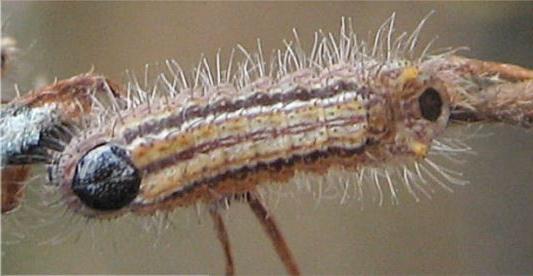
(Photo: courtesy of
Wes Jenkinson, Beaudesert, Queensland)

| Chequered Copper (previously known as Polyommatus limbaria) LUCIINI, THECLINAE, LYCAENIDAE, PAPILIONOIDEA | (donherbisonevans@yahoo.com) and Stella Crossley |

(Photo: courtesy of
Wes Jenkinson, Beaudesert, Queensland)
This Caterpillar is off-white and hairy, with a number of pale and dark brown longitudinal stripes. It has a black plate on the thorax and on the last abdominal segment. It is usually attended by numerous small black ants of the species :
both in DOLICHODERINAE.
The caterpillar feeds on various species of Oxalis (OXALIDACEAE), including :
Initially it just eats the surface of a leaf, but later instars eat the whole leaf. When not feeding, the caterpillar hides in an ants' nest chamber in the soil at the base of the foodplant. The caterpillar grows to a length of about 2 cms.

The pupa is initially green, changing to brown as it matures. Its length is about 1 cm. It is formed in the ants' nest.
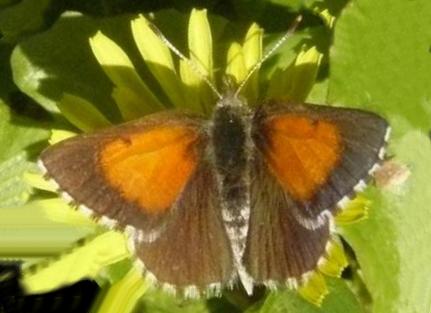
The adults are brown on top with chequered margins. Each forewing also has a large yellow patch and two black spots.

Underneath, the forewings are yellow, and the hindwings are pale brown, both with arcs of darker brown spots outlined in white. The butterflies have a wing span of about 3 cms.
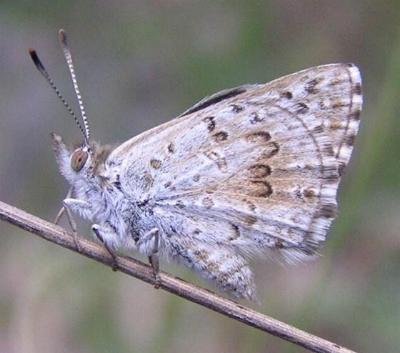
The eggs are white and mandarin-shaped with a lot of pale green dimples. They are laid singly or in small groups and covered in scales. They are sometimes laid under a leaf, or on the upper surface of a lower leaf, of a foodplant. The eggs have a diameter of about 0.8 mm.
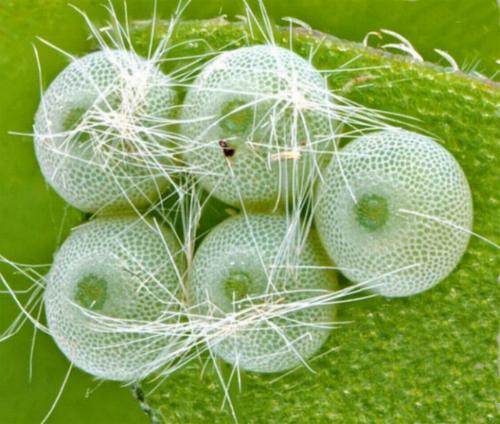
The species has been found in
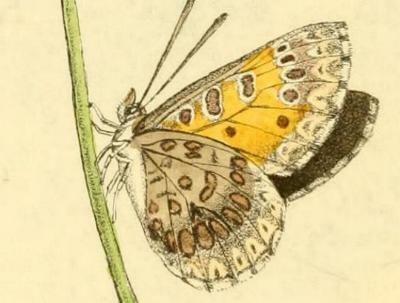
Further reading :
Andrew Atkins, John Moss,
Butterflies and Other Invertebrates Club
Newsletter, Issue 48 (March 2008), pp. 1, 4-8.
Michael F. Braby,
Butterflies of Australia,
CSIRO Publishing, Melbourne 2000, vol. 2, pp. 627-628.
Murdoch de Baar,
Lucia limbaria, the Chequered Copper, some extra notes,
Metamorphosis Australia,
Issue 50 (September 2008), pp. 10-11,
Butterflies and Other Invertebrates Club.
Wesley Jenkinson,
Life History Notes on the Grassland or Chequered Copper,
Lucia linbaria: Lycaenidae,
Butterfly and Other Invertebrates Club Newslettter,
Issue 49 (June 2008), pp. 14-17.
William John Swainson,
Zoological Illustrations,
Series 2, Volume 3, Part 29 (1833), p. 135, and also
Plate 135.
 caterpillar |  butterflies |  Lepidoptera |  moths |  caterpillar |
(updated 23 February 2011, 20 September 2013, 4 August 2020, 9 September 2021)